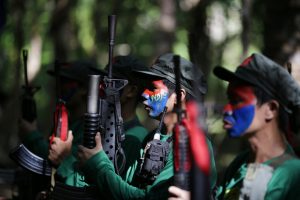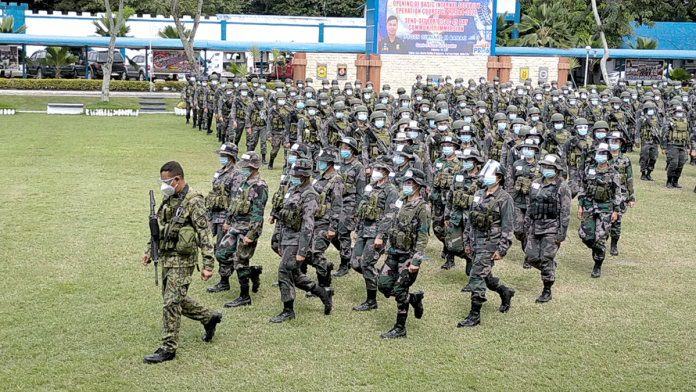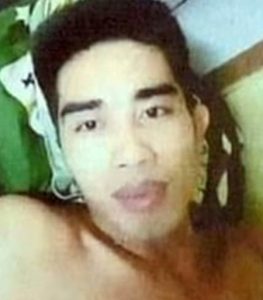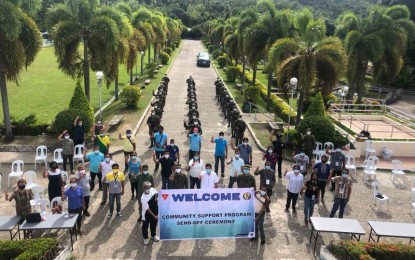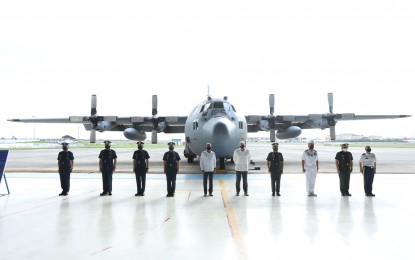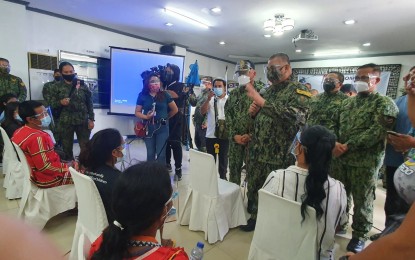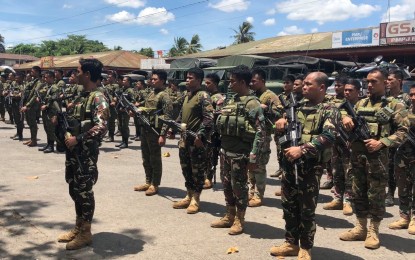The Philippines’ Maoist insurgency has spanned over five decades and is one of the world’s longest ongoing armed conflicts. The roots of militant communism in the Philippines can be traced as far back as World War II, when communist guerrillas led by the Partido Komunista ng Pilipinas-1930 (PKP-1930) fought a campaign of resistance against the Japanese occupation. After the war, they continued to fight against the government of the newly independent Republic of the Philippines, in what became known as the Hukbalahap Rebellion.
The beginning of the current conflict, however, dates to 1969 and the emergence of the New People’s Army (NPA). With the end of Hukbalahap Rebellion in 1954 and the virtual dissolution of PKP-1930, communist revolution in the Philippines appeared a thing of the past. However, the 1960s saw a resurgence in the popularity of radical left-wing politics, particularly Mao Zedong Thought, which was welcomed as a necessary revision to Marxist-Leninist ideology. In 1964, Jose Maria Sison — who at the time was still involved with PKP-1930 — founded Kabataang Makabayan, a socialist youth organization which had among its members Rodrigo Duterte, the current president of the Philippines. After leading a rectification campaign to address the failures of PKP-1930, in 1968 Sison then went on to found the Communist Party of the Philippines (CPP). A year later, the NPA was established as the armed wing of the CPP with the help of a former member of the Hukbalahap guerrilla movement.
Since then, the NPA has conducted an unrelenting insurgency against the Philippine government, with units based across the length and breadth of the country, from Luzon to Mindanao and Palawan to Samar. Despite the best attempts of the Armed Forces of the Philippines (AFP) to drive the NPA into submission, as well as over
40 rounds of peace talks hosted by the government, both the NPA and the CPP’s political wing, the National Democratic Front (NDF), remain active.
NPA on the Brink of Collapse?Over the last few months, however, both the AFP and the government have claimed that the NPA is on the verge of collapse and expressed confidence that peace can be
achieved by 2022, the end of Duterte’s term in office. These statements have accompanied a steady stream of spectacular reports detailing the number of NPA soldiers killed, captured, or capitulated.
For instance, a group of 50 NPA members
surrendered en masse
in Saragani on March 28; between June 6 to 12 in the space of less than a week, a staggering 480 NPAs
laid down their arms, with fighters based in North Luzon making up the majority of these; and then on 16 November, 63 NPA rebels in Sultan Kudarat
indicated their wish to return to the legal fold. In Mindanao in particular, the NPA has suffered significant losses—from January 1 to November 16 2020, the AFP
claims to have “neutralized” or captured, killed, or accepted the surrender of 3,832 NPA members and supporters in the Eastern Mindanao region alone.
Upon closer inspection, however, these figures are problematic. According to the AFP, by December 18 the number of neutralized NPAs in Eastern Mindanao had
risen to 5,985, meaning an increase of 2,153 in the space of just over a month. Additionally of the 5,985, 4,300 were members of Underground Mass Organizations (UGMOs) and other pro-communist organizations and were therefore unlikely to be armed fighters. Given that
current estimates of the NPA’s size tend be in the region of 4,000-5,000, it is difficult to accept that in a single year as many as 1,685 fighters were neutralized within a single region.
CPP founder Jose Sison instead argues that the NPA has managed to
expand its ranks and has “thousands of Red fighters well-trained and battle-tested in more than 100 guerrilla fronts in 73 provinces out of the 81 Philippine provinces.” Sison further claims that the NPA is able to operate freely in more than 80 percent of areas in the Philippines and that its 14 regional commands remain capable of “waging battles that…[they] can win.” This runs counter to the
AFP’s assessment, which only accounts for a total of 54 remaining guerrilla fronts, with nine other regional armed groups on the brink of collapse. Similarly, the Philippine National Police (PNP) reported an
increased number of surrenderees in 2020: it claims a total of 3,155 NPA fighters turned themselves in, compared to 405 in 2019 (this does not include those logged by the AFP).
A Conflict of InterestsDetermining the truth of these claims is complicated by the fact that all parties involved are subject to their own, often conflicting, interests, which dictate how the insurgency is framed. At the head of the Philippine government is Duterte, whose election was due, in part, to promises he made while still on the campaign trail to end the 50-year-long conflict with the NPA. Duterte was seen as
uniquely placed to secure a resolution to the communist insurgency due to his past involvement with radical socialist organizations and his personal connection with Sison, a former university professor of Duterte’s. Early attempts at engagement resulted in a historic ceasefire, but this soon collapsed over disagreements relating to the release of political prisoners. The extent to which Duterte was, and still is, politically invested in the peace process was made clear by the rather tortuous attempts he made to revive negotiations with the CPP. For over a year, Duterte
oscillated between levying threats and offering concessions before finally announcing in November 2016 that peace talks had been terminated and, a month later, declared the CPP-NDF-NPA a terrorist group. Since then, with the exception of a brief ceasefire in response to the COVID-19 pandemic, Duterte has refused to engage with the CPP-NDF-NPA.
Despite being a source of pressure for Duterte, the communist threat also provides a useful political device to tackle opposition and legitimize some of his more controversial policies. “Red-tagging,” the practice of labelling someone as an affiliate of the CPP-NDF-NPA, has spiraled out of control since the beginning of Duterte’s administration. In particular, Duterte has been accused of using red-tagging to target the
Makabayan bloc, a coalition of leftist political parties, in a bid to remove them from government. Duterte has also been blamed for using the conflict with the communists to justify the introduction of the
Anti-Terrorism Act of 2020, which has been widely criticized for its failure to uphold human rights, as well as for its potential to be used to silence opposition. Currently, the law is under review in the Supreme Court after numerous petitions have been filed against it, including by
two Aetas (indigenous peoples from the island of Luzon) who were accused of being members of the NPA. The men were the first to be charged under the law, but say they were wrongly convicted and subjected to torture.
For the AFP, the communist insurgency provides a key part of its raison d’être and, more importantly, one of the main justifications for its bloated budgetary requirements. This is because a significant proportion of the military’s resources are devoted to counter-insurgency operations, and this is reflected in the allocation of its funding from the government. One such source of funding is the National Task Force to End the Local Communist Armed Conflict (
NTF-ELCAC), which was created by Duterte as part of his “whole of nation” approach to mobilize the entire bureaucracy, rather than just the state security apparatus, to resolve the 50-year-old conflict.
As part of its responsibilities on the NTF-ELCAC, the AFP participates in various peacebuilding initiatives. Working in partnership with Local Government Units, the AFP delivers community outreach and capacity building programs to local communities in conflict-affected regions. Members of the AFP are also usually present at
oath-taking ceremonies in which communities swear allegiance to the government, as well those in which former rebels are awarded with
financial assistance through what is known as the Enhanced Comprehensive and Local Integration Program (E-CLIP). The importance of these activities in drawing local support away from the CPP-NDF-NPA and towards the government means that the AFP is effectively able to approach the government with an open hand when making funding requests.
Not surprisingly, the Makabayan bloc has described the NTF-ELCAC as a pork barrel fund. Whether this is true or not, there are clear financial incentives for the AFP to prolong the conflict with the Maoist rebels in order to avoid the reduction in its budget that a peace agreement would surely entail. This may explain why when the question of declaring the usual holiday ceasefire came up this Christmas, the AFP
recommended against the idea and then made sure to
thank Duterte for heeding its advice.
Local Government Units (LGUs) also find themselves in an equally conflicted position. LGUs are major recipients of NTF-ELCAC money due to the fact they are in charge of administering village development schemes. In fact, in the NTF-ELCAC budget for 2021, the majority of funds have been allocated to village development, meaning that this year LGUs will
receive more from the NTF-ELCAC than either the Department of Labor and Employment or the Department of Tourism. To qualify to receive the funds though, LGUs may have to prove that villages have been cleared of communists. Senator Risa Hontiveros has pointed out the potential for abuse here, whereby the release of funds could be tied to the granting of
political favors. Village leaders are crucial in mobilizing voters and with the 2022 elections approaching this could provide the government with a way of
siphoning support away from progressive candidates. Again, though, should the insurgency come to an end, LGUs would not only lose a significant portion of their funding, but also a key source of political leverage. There are even LGUs which are sympathetic to the communist cause, as demonstrated by news that the Department of the Interior and Local Government is filing charges against a member of the Quezon provincial board for
sheltering two members of the NPA.
Seeing as the ideological goals of the NPA provide for a typically zero-sum game when it comes to negotiations with the government, it is unlikely to abandon armed resistance any time soon. This being said, among individual members of the group there are incentives to engage with the government. Surrendering NPAs frequently cite the general hardship of the guerrilla lifestyle, particularly the
scarcity of food and other basic necessities, as the main factor behind their decision. Other factors include: failures to provide adequate
financial support; ideological divisions, especially regarding
taxation of the poor; and
isolation from family members. Recently, there has been more than one case of female members leaving the NPA after suffering
sexual abuse. Former rebels have also stated that the arrival of the COVID-19
pandemic contributed to the difficulties they faced.
Aside from these push factors, E-CLIP and other government-run schemes offer significant incentives for NPA fighters to reintegrate with society. Those that do, receive
immediate assistance in the form of a
cash sum between 5,000 and 20,000 pesos;
livelihood assistance (usually between 10,000 and 50,000 pesos);
housing assistance, which can be as much as 450,000 pesos; and
firearms remuneration. Former rebels are also provided with
skills training through organizations like the Technical Education Skills and Development Authority.
This does not mean, though, that the number of surrenderees is necessarily a good metric for the rate of attrition among NPA fighters. For instance, it is a known occurrence for fighters to surrender in order to claim financial assistance and then swiftly return to the ranks of their unit. This is particularly true for those fighters faced with immediate and pressing demands for large sums of money from family members, such as for medical bills or loan repayments. The government has also been
accused of falsely presenting ordinary citizens as former NPA insurgents in its photo-ops.
Another feature of government reports throughout 2020 has been the large number of civilians withdrawing their support for the insurgency. Announcements of several
hundred people, or even entire villages, denouncing the CPP-NDF-NPA during mass surrenders and oath of allegiance ceremonies are not uncommon. In addition to the financial assistance provided to former fighters by schemes like E-CLIP, as mentioned above, the NTF-ELCAC also allocates funds to LGUs for the purposes of village development. In December 2020, the Department of the Interior and Local Government (DILG)
declared that 1,546 LGUs — at least 90 percent of the country’s total — have designated communist sympathizers as persona non grata in their localities.
It should be noted, however, that the DILG’s assertions were immediately called into question after the mayor of Quezon City, which was included among the list of LGUs,
denied ever having made such a statement. Similarly,
comments made by the AFP on multiple occasions suggesting that only Mindanao can still be considered an NPA stronghold don’t hold up to scrutiny. Frequent clashes continue to occur in other traditional NPA strongholds, such as Samar Island, Leyte, Mindoro, and even Central and Northern Luzon, where the AFP has claimed the NPA is apparently close to “
extinction.” These areas would not be NPA strongholds without the support of the local population. Recently, for example, it was necessary for the mayor of a town in Samar to
warn local leaders that they will be arrested if they continue to assist the NPA. The reality in most areas, though, is that people are forced to cooperate with which ever armed force is at their doorstep on any given day, whether it be it the NPA or the AFP.
ConclusionAs Marco Valbuena, the information officer of the Central Committee of the CPP
said himself, “[w]e must remember that through the past decades, all of the AFP’s past predictions of crushing the NPA have all been proven wrong.” The NPA’s ability to survive is not only down to factors like the enduring appeal of communism among rural communities and the Philippines’ indigenous peoples (see my
recent article), but also because there are clear incentives for the government and the AFP to prevent its total collapse. As long as sustained conflict is mutually beneficial for all sides involved, it is difficult to see an end to the insurgency by 2022.
[Jack Broome is a security analyst focusing on Southeast Asian and East Asian regional politics, with a specialization in ethno-religious violence, intra-state conflict, anti-state activity and secession struggles.]https://thediplomat.com/2021/02/an-end-in-sight-for-the-philippines-maoist-insurgency/

